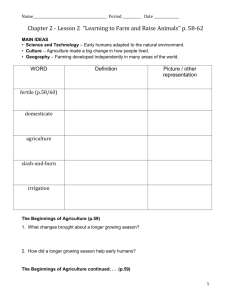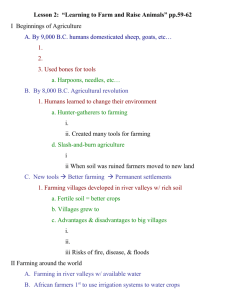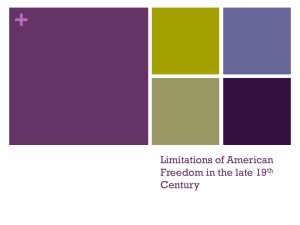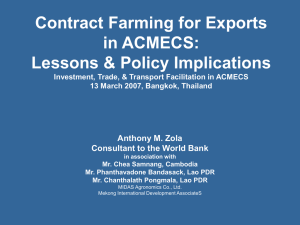Chapter 10 Economic Transformations in the Northeast and the Old
advertisement
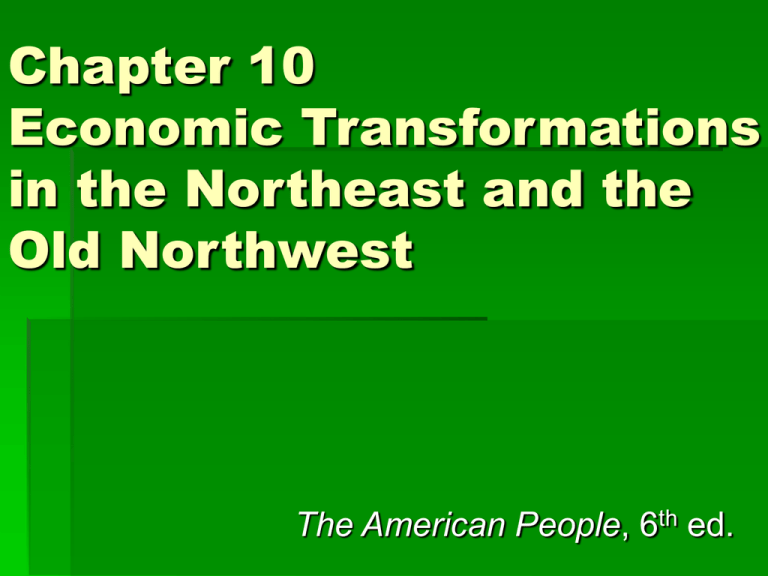
Chapter 10 Economic Transformations in the Northeast and the Old Northwest The American People, 6th ed. I. Economic Growth The Trans-Atlantic Context for Growth Economic growth in America was linked and influenced by a host of events elsewhere in the world, particularly in England. The British Industrial Revolution spurred technical innovations that had far-reaching implications. Population growth and improvements in food production through agricultural science also were factors in European and American growth. Factors Fueling Economic Development The abundant natural resources of the United States Increased labor pools, due to immigration from Europe Improved modes of transportation (canals, railroads) A New Mentality The rapid spreads of literacy and education after 1800 spurred innovation and discovery, leading to increased productivity. Under the direction of Horace Mann, reform of state education for white children ballooned in 1837. The Advance of Industrialization Based on the British model, the growth of industrialization in America fueled enormous economic growth in the years before the Civil War. Organization of production into the separate steps of manufacturing began to replace the age-old process of “putting out.” Environmental Consequences The impact of the swift economic growth of America had significant environmental repercussions. Insatiable demands for wood as fuel and building material destroyed forests and promoted soil erosion. A later shift to coal blanketed the larger cities in pollution. II. Early Manufacture Two Examples of Transformation Unprecedented increase in availability of printed material and increased literacy gave Americans the opportunity to form their own opinions and enrich their lives. Production of inexpensive timepieces focused the average American’s attention on the value of time and created the industrial rhythm of life as we know it today. III. Urban Life The Process of Urbanization The impact of economic growth was experienced most directly by those living in the nation’s cities, which emerged into three types: Commercial centers Mill towns Transportation hubs Class Structure in the Cities The inequities of wealth and lifestyle in the urban areas reflected social fluidity and the potential for everyone to “make it.” Americans believed capitalists deserved the profits from the economic expansion of the country. The growing inequities solidified class lines and led to increased social agitation and labor protests. Middle-Class Life and Ideals The new middle class benefited from the economic growth in antebellum America. Furnished houses with the latest conveniences were the rule compared to the inadequate housing of the working class. Genteel behavior and etiquette as well as specific designations for gender. Mounting Urban Tensions Social tensions as a result of class distinctions and wealth inequities led to dramatic increases in urban violence in the years before the Civil War. Large American cities were slow to establish a professional police force relying instead on volunteer constables. The Black Underclass In the sixty years before the Civil War, the number of free blacks in America rose dramatically. Most of these free blacks lived in the large northeastern cities. They did not enjoy the rewards of the economic expansion of the times. Black civil rights were repressed everywhere. Educational opportunities for free blacks were minimal. IV. Rural Communities Farming in the East During the antebellum period, fertile land in the east was beginning to run out. Irresponsible farming techniques drained the land of nutrients, and eastern farmers realized the futility of competing with western grain farmers. The solution was an increase in cattle farming for meat and milk and fresh vegetable production for the urban markets. Frontier Families After the War of 1812, movement to the Old Northwest began in earnest. Changes in federal land policy helped stimulate migration. The Old Northeast was only considered the frontier for thirty years. Mistaken ideas about agriculture caused farmers to ignore prairies as arable land.




